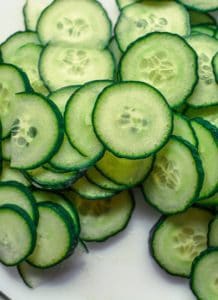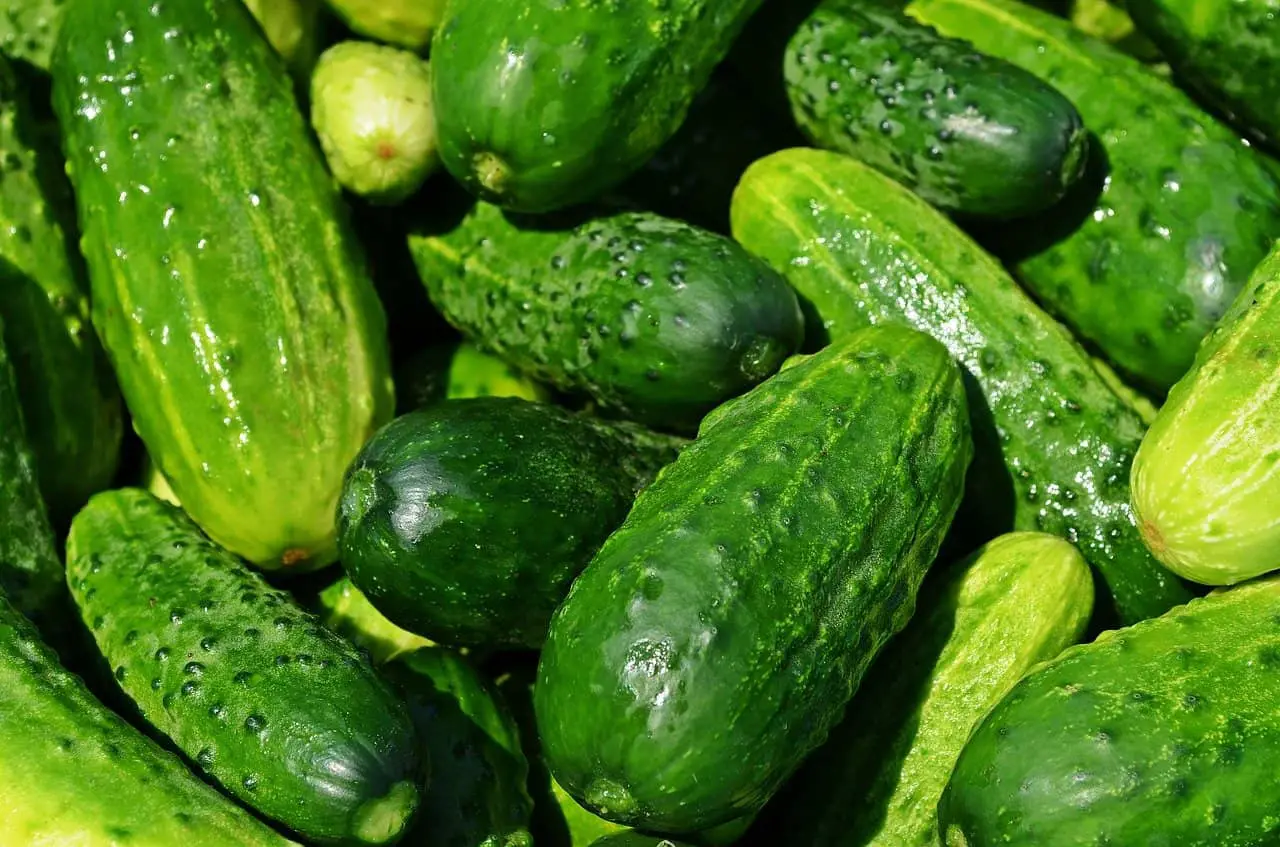Some links in the post are affiliate links and I get a commission from purchases made through some links found in the post.
Cucumis sativus, or Dosakaya, is a type of cucumber native to South Asia and widely used in their cuisine.
It is a popular choice for home gardeners because it is easy to grow and yields lots of fruit that can be used in a number of interested ways.
Like its cousins cucumber, squash and melon, dosakaya grows on a spreading vine.
The ripe fruits are about the size of a softball, round to somewhat oblong, and yellow with light green markings.
Inside, the flesh is white, and it is lightly fragrant, crunchy and watery just like a melon. It can be eaten raw or cooked.
The small yellow seeds are edible and come covered in a slippery coating. As a quick dosakaya growing guide:
- Choose where to plant your dosakaya, in northern regions plant in mid spring. In warm climates plant in late fall
- Plant your dosakaya in rich well draining soil that gets at least 5-6 hours of sunlight per day
- Plant your seeds approximately 12cm to 14cm apart from each other and 1.3cm depth
- Plant 1-2 seeds per spacing
- Make sure to water regularly and keep the soil moist
- They will take 5-7 days to start to germinate
Nutritional Benefits
Dosakaya are very nutritious, rich in vitamins C, E and K, Potassium and Magnesium.
It also is a great source of dietary fibre. It is said to be a powerful detoxifying agent.
Growing Dosakaya
When to Plant Dosakaya
The Dosakaya plant is a quick grower. Plant it when the temperature is at least 15 celsius (60 Fahrenheit) and you should expect the fruit to be ready in a couple of months.
For those of us in Northern regions this means planting time is around mid-spring and harvest time would be in the late spring or early summer.
In warm climates, however, it is actually considered a winter crop, planted in the late fall.
Growing Conditions
Dosakaya should be planted in rich soil that is moist but well drained and in a spot that gets at least five to six hours of sunlight per day.
Dosakaya do not need a lot of space to grow to their full extent. Plant them about one foot apart in rows about two feet apart.
If you are growing your dosakaya in a container, choose one that is about one square foot in area.
You can train your plant to grow up a trellis or allow it to spread over the ground. The plant will reach a height of two to three feet or a spread of around two square feet.
How to Manage your Dosakaya Plant
Dosakaya should be watered regularly, but it is important that the soil drains well.
Enrich the soil with compost or an organic fertilizer that is rich in phosphorus, similar to what you would use for tomatoes, eggplants or heavy-feeding annual vegetables.
You are ready to harvest when the fruits turn yellow.
 One more thing: Like most plants in the cucumber family, Dosakaya have separate male and female flowers.
One more thing: Like most plants in the cucumber family, Dosakaya have separate male and female flowers.
You can usually rely on your local insect friends to do the task of pollinating, but if you want to be extra sure, you can do it yourself.
Take a q-tip or small clean paintbrush and gently touch it to the stamen (the pollen producing, male part of the flower).
You will see the pollen, a yellow powder, on the tip of the brush. Then lightly rub it onto the pistil (the female part of the flower, connected to the plant’s ovaries).
The female flowers have a distinctive bump under the petals – this is what develops into the future fruit.
If you are enjoying this article, check out our article on how to start growing carrots from scraps.
Problems with Growing Dosakaya
The problems which affect dosakaya are similar to those that affect all cucumbers. Here is a list of common problems and ideas for solutions.
1) Insufficient water
If your plants aren’t getting enough water you will notice their growth slowing, the vines and leaves wilting or the fruit not developing fully.
The shape of the fruit may be stunted. Make sure you water your plants deeply.
Like most plants, these prefer it if you water thoroughly once a week rather than a light watering every day.
If you are growing in containers the soil might require more frequent watering.
2) Too much water
The opposite issue can present just as much of a problem. Like all plants, the roots of dosakaya will rot if they are drowning in water.
Be sure to let the soil dry out between waterings and if you are growing in containers make sure the drainage holes are adequate.
3) Nutrition deficiency
You will see the plants turn pale green or yellow and the fruits become cracked and misshapen.
A good dose of compost around the base of the vine at the start of the season should do the trick but if that’s not enough you can add organic fertilizer.
4) Mildew
If the leaves look like they are coated in a fine coating of chalk dust, mildew is the most likely culprit.
Fortunately, it won’t affect the fruit or kill the plant, though it may limit its growth. To avoid this, try to keep the leaves dry when watering.
If the problem gets out of control, go to your local gardening shop and buy some organic fungicide.
5) Cucumber beetles
These stripy pests feed on the leaves of cucumbers and other members of this plant family.
You can set sticky traps for them around your plants, but you will inevitably trap a few ‘good’ insects along with the bad.
They aren’t a huge problem unless their numbers really balloon so if you are only planting a few plants you can probably ignore them. Rotating the crop every year can help.
You may also like: Black krim vs cherokee purple
Eating Dosakaya
Dosakaya are versatile and widely used in Indian cooking. They can be sliced and eaten raw in a salad or cooked in a stew or stir-fry and are a popular addition to a whole variety of curries.
They mix well with lentils and are often flavoured with mustard seeds, turmeric, ginger, sesame seeds, garlic and curry powder.
You can also preserve your dosakaya just like you would pickle a cucumber. Unlike Western pickles, Indian pickles are very spicy.
They can be added to dishes to give them a little extra or eaten alone as a tasty snack.
The whole process of making them only takes 24 hours, and this convenience adds to their popularity, making them a beloved staple, known especially in the Indian state of Andhra Pradesh.
Final Thoughts: How to Grow a Dosakaya Plant
These prolific producers are easy to grow and delicious. There are several varieties you can choose from and lots of different recipes to try.
If you’re like me and enjoy seeing an abundance of fruit hanging in your own garden, then dosakaya are a great choice.
Before you go, here are some more related articles I encourage you to read below to help solve more of your gardening issues:
Can You Grow Carrots Hydroponically

